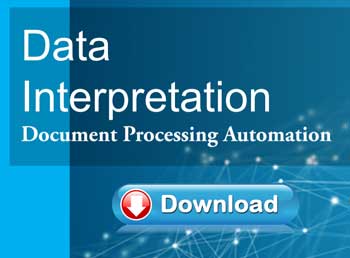 Intelligent character recognition (ICR)—or handprint recognition—focuses on transcribing the handprinted values on various forms such as applications and tax forms.
Intelligent character recognition (ICR)—or handprint recognition—focuses on transcribing the handprinted values on various forms such as applications and tax forms.
You might have seen these special forms where the values for each entry are formatted in what are called “boxes:”
![]()
Or “combs:”
![]()
These types of data entry formats exist solely to allow automation of handprint recognition to reduce the manual typing of this data into business systems.
Handprint Recognition Systems: General Limitations
Boxes and combs are used because for most technologies, the ability to recognize handprint is very limited in terms of the ability to parse and understand what is a single character or word. The result is that applicants must enter a single character into each box or comb section instead of printing their entry as you will typically see on forms of all types.
Restricting Form Design
The deeper reason for requiring boxes and combs is that many modern handprint recognition systems cannot accurately perform what is called character and word-level segmentation of answers in order to recognize that a handprinted “C” is the letter C and not the letter “P” which might actually be an “I” and an “O.” So entries are segmented by the form structure itself, with individual characters separated by a box or comb line and words separated by an entire blank space.
Without this form-based segmentation, the results of recognition will be poor and the promise of automation will not be delivered.
Reformatting forms to use boxes or combs is also more complex than general forms design where the data can be entered into fields marked with a blank. Designers must spend more time to think about minimum and maximum lengths of entries and then design the appropriate number of characters for a single form field.
Overcoming Limitations with Advanced ICR
A completely different type of handprint recognition is available, however, that performs both word-level and character-level segmentation removing the need for specialized form design. This technology actually thrives on what is commonly-known as “unconstrained handprint.” In many cases, advanced ICR performs much better on forms that have not been redesigned to cope with alternative and inferior ICR technologies.
Unconstrained Handprint Recognition
Unconstrained handprint recognition relies upon a number of specialized image analysis algorithms to automatically separate characters and words without any form design aid. It does this in a different way to typical ICR by understanding individual character shapes and, using that, developing a hypothesis of general spacing between characters and words.
The result is the ability to simplify by managing one type of form design (without making unnecessary modifications) while achieving a higher-level of performance compared to general ICR technologies with quality data results.
Parascript Advanced Data Interpretation
Parascript has expanded ICR functionality in many ways including the ability to recognize unconstrained and cursive handwriting. It offers significant cost savings, greater recognition versatility and the ability to adapt to any style of form. Our advanced ICR also delivers high read rates and accuracy levels. This delivery is based on a holistic approach in reading handwriting, advanced methods of software training, context use and many other technological advances. Enterprises that need to process high volumes of forms gain a competitive advantage from a comprehensive automated data interpretation system that includes the best attributes of OCR and ICR.
To find out more about the methods used in advanced data interpretation powered by machine learning, you might find this eBook interesting:

